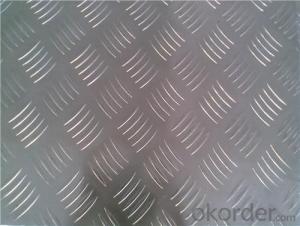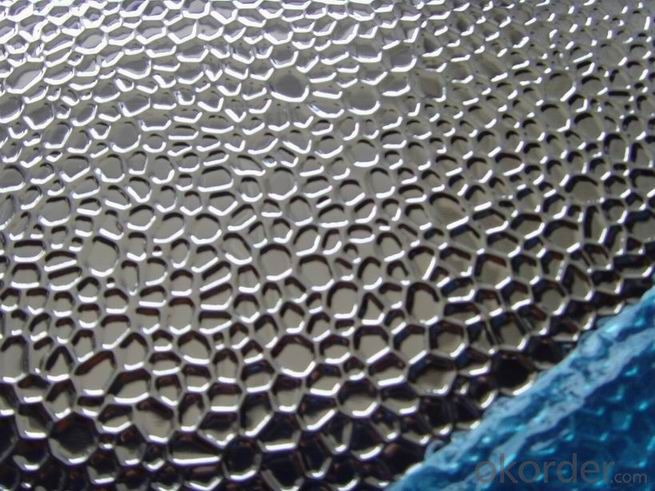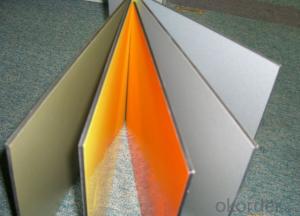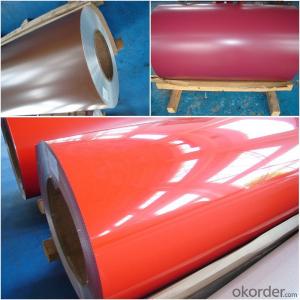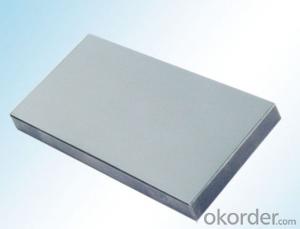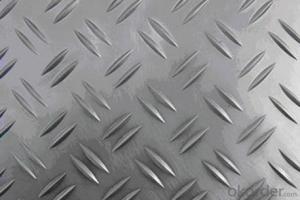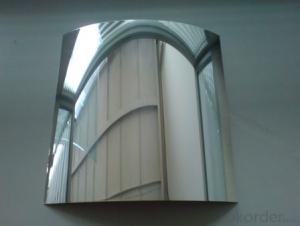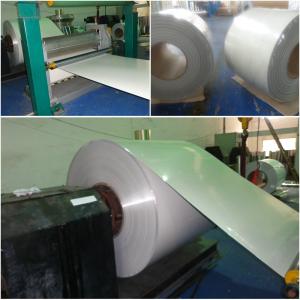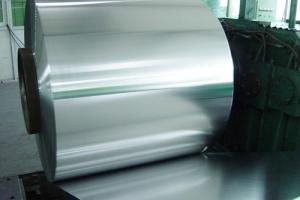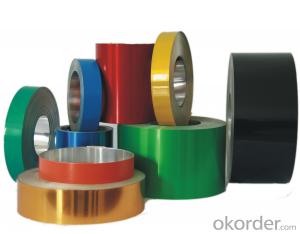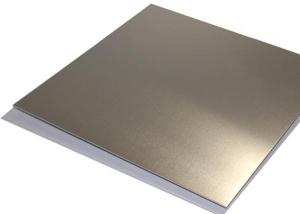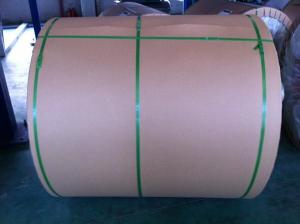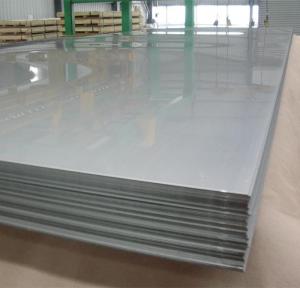Aluminum Sheets for Attics - Cold Rolled/Hot Rolled Aluminium Coil with Embossed/Mirror/Color Coated Treatment
- Loading Port:
- Shanghai
- Payment Terms:
- TT OR LC
- Min Order Qty:
- 5 m.t.
- Supply Capability:
- 9000 m.t./month
OKorder Service Pledge
OKorder Financial Service
You Might Also Like
Specification
Product Description
Product | aluminium coil |
Thickness | 0.25mm-2.0mm |
Width | 800mm-1900mm |
inner diameter | 505mm (as per requirements) |
weight | 2000kg-3000kg |
Material | 1050,1060,1100,3003,3004,3105,5052,5005, 5754,5083,6061,6063 etc |
Temper | O,H12,H14,H16,H18,H24,H26, H32,H34,H111,H112,T3,T5,T6 etc |
Surface | flat |
Packing | Export standard wooden pallets (as per requirements) |
Minimum Order Quanlity | 5 tons pre size |
Delivery time | 20-30 days after receiving L/C or deposit |
Loading Port | Qingdao,Shanghai China |
Remark | Specific requirement of alloy grade,temper or specification can be discussed at your request |
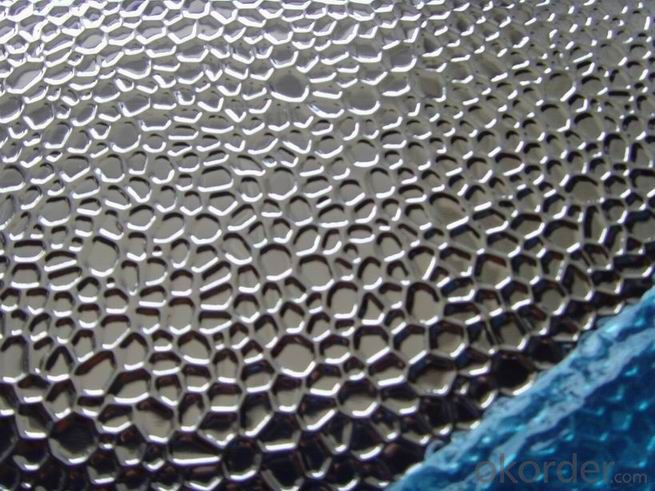
Packaging & Shipping
1.with wooden pallet packing.
2.standard fumigated wooden package.
3.other packing methods by customer's requirement.
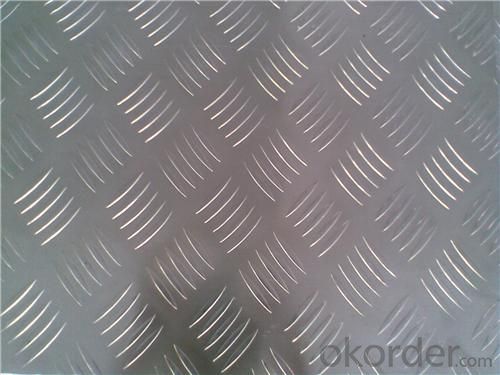
Company Information
Our company is a leading company in the field of producing aluminum sheet,aluminum plate,aluminum coils,aluminum tap,aluminum foil and other products.we have the hot rolling production line,casting&rolling production line,cold rolling production line,shearing machine,annealing furnace and other equipment
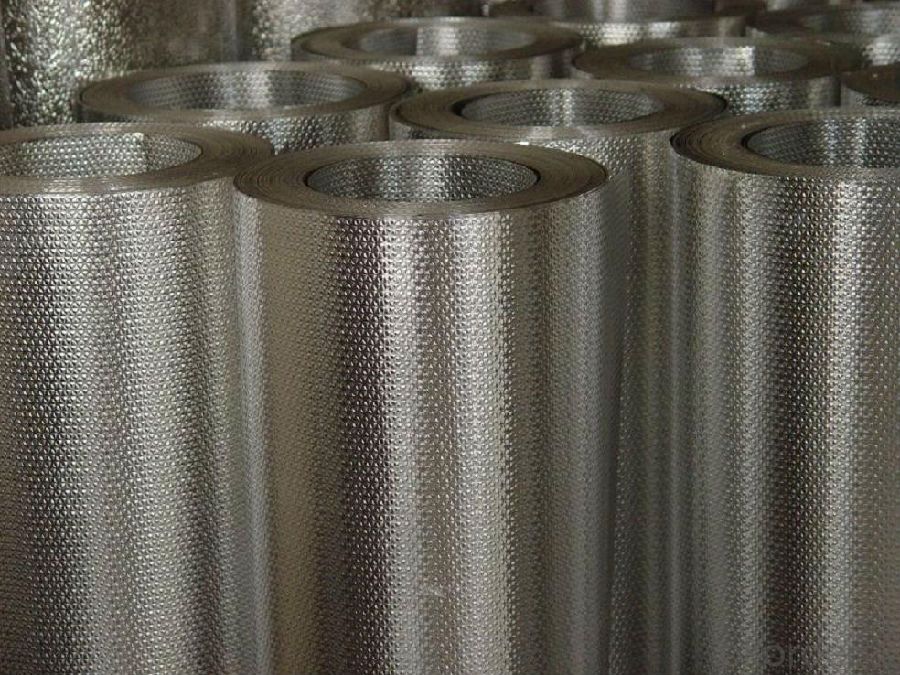
- Q: What are the rules and standards that govern the use of aluminum sheets in construction projects?
- <p>Yes, there are regulations regarding the use of aluminum sheets in construction. These regulations vary by country and region but generally cover aspects such as material standards, safety, and environmental impact. For instance, in the United States, the American Society for Testing and Materials (ASTM) provides standards for aluminum sheet materials. Building codes like the International Building Code (IBC) also specify requirements for the use of aluminum in construction. These regulations ensure that aluminum sheets meet certain strength, durability, and performance criteria. Compliance with these regulations is crucial for safety, structural integrity, and to obtain necessary permits and approvals for construction projects.</p>
- Q: I have no idea, and I can't figure this out, and neither can my aunt and she's super smart. It's this project that's due on Monday, and if I can't get it turned in, then I get detention and a failing lab grade. The only information I have is it's $2.96 for a roll of aluminum, it contains 2.96 square meters, and it weighs .995 grams...
- 3 square meters masses less than a gram - surely not But lets assume you have 0.995 grams. Dividing this number by 26.98(molar mass of AL) would give you moles of Al. Multiplying the number of moles X Avogadro's number (6.022 X 10^23) would give you atoms of Al. That number of atoms will cost you $2.96 . Dividing the cost by the total number of atoms will give you dollars per atom.
- Q: What are the weight and density of aluminum sheets?
- The thickness and dimensions of aluminum sheets determine their weight and density. In general, aluminum has a density of approximately 2.7 g/cm³ or 2700 kg/m³. To calculate the weight, you can multiply the density by the volume of the sheet. For instance, if you have a 1-meter by 1-meter sheet that is 1 millimeter thick, the volume would be 0.001 cubic meters (1 meter x 1 meter x 0.001 meter). By multiplying this volume by the density of aluminum, you would find that the weight of the sheet is 2.7 kilograms (0.001 cubic meters x 2700 kg/m³). Keep in mind that these values may vary depending on the specific dimensions and thickness of the aluminum sheet.
- Q: My frame snapped and I want to fix it by welding it back together. In order to do that, I need to know what all is in the aluminum.
- You can NOT weld back an aluminum frame unless you have the facilities to anneal and heat treat the frame again. Rewelding without the post treatments will result in a very soft area around the new weld causing sudden catastrophic failure... this means if you are riding it could fail at any time causing injury or death. EDIT: Wait just a durn minute. The 2100 and 2300 had carbon fiber tubes bonded to aluminum lugs and stays. If your bike failed then you ABSOLUTELY should not try to weld it. The heat from welding (even if you had post treatment facilities) would destroy the bond between the CF and aluminum. Fair warning- cut the frame apart and throw it away.
- Q: Are aluminum sheets non-magnetic?
- Indeed, aluminum sheets lack magnetic properties as they are not ferromagnetic. Instead, they fall under the classification of paramagnetic materials with a feeble reaction to magnetic fields. Consequently, aluminum sheets fail to exert any magnetic attraction or retention.
- Q: Is it possible to use aluminum sheets as a material for the exterior walls of residential buildings?
- <p>Yes, aluminum sheets can be used for exterior walls in residential buildings. They offer several advantages such as durability, resistance to weather and corrosion, and low maintenance. Aluminum is lightweight, which can reduce structural load, and it can be easily shaped and installed. Additionally, it has good thermal performance and can be combined with insulation for energy efficiency. However, it's important to consider the aesthetic appeal, as aluminum may not match the traditional look of some residential buildings, and ensure it meets local building codes and standards.</p>
- Q: Fiber laser cutting machine and carbon dioxide laser cutting machine, which thin aluminum plate effect is better?
- Carbon dioxide laser cutting edge, a little black, if it is to use optical fiber, the cutting effect is more beautiful, but it also depends on your needs, our fiber laser cutting machine and carbon dioxide laser cutting machine have, can come to visit Hummer laser
- Q: 1. Why does aluminium resist corrosion?2. How do we make aluminium stronger?3. Why does titanium resist corrosion?4. What properties make titanium ideal to use in jet engines and nuclear reactors?5. Why do we need electricity to make aluminium and titanium?6. Why does recycling aluminium save electricity?Even if you only know the answer to one question the help will be much appreciated :D
- 1. When exposed to air, pure aluminium rapidly forms a passive oxide layer, alumina, which further inhibits aluminium reactions with other elements. 2. Aluminium can be made stronger by alloying with other elements. One of the most known aluminum alloy is duraluminium, where the principal alloying component is copper. 3. Exactly as aluminium, titanium corrosion resistance is due to its high reactivity with oxygen. When pure titanium is exposed to air it forms a passive titanium dioxide layer on the surfaces exposed which further prohibits other reactions with corrosion agents. 4. The use of titanium in jet engines components is favored by its strength to weight ration, which is unmatched by any other metal. As for the nuclear reactors, its use is preferred because of its superior corrosion resistance associated with fracture toughness and overall durability. 5. Both titanium and aluminium are refined from their respective mined ores - bauxite, for aluminium, ilmenite and rutile for titanium. Basically, these are oxides of the metals. Pure metal has to be reduced from these ores and processes involve use of temperatures up to and sometime exceeding 1000 degrees Celsius, which obviously requires a great consumption of energy, including electricity. Moreover, pure aluminium is obtained in the final processing phase through electrolysis, meaning an electrical current is needed in order to drive the required chemical reactions, thus adding to the electrical consumption. 6. Recycling aluminium from aluminium simply requires the remelting of the metal, eliminating the electrolytic phase that is high electric energy consuming.
- Q: aluminum is produced by breaking down the compound...
- Bauxite is the most important aluminum ore. It consists largely of the minerals gibbsite Al(OH)3, boehmite γ-AlO(OH), and diaspore α-AlO(OH), together with the iron oxides goethite and hematite, the clay mineral kaolinite and small amounts of anatase TiO2. You have an unusual way of asking that question. Aluminum is an element and cannot be broken down accept to sub-atomic particles.
- Q: i keep hearing all these things about burning aluminum foil and such
- Yes, aluminum is a soft metal andit will not hold up well in a fire and if it's a hot fire you don't want to breathe in any fumes the rim might give off. If you want to use a rim, best to use steel. Or like the other guy said, rocks or bricks.
Send your message to us
Aluminum Sheets for Attics - Cold Rolled/Hot Rolled Aluminium Coil with Embossed/Mirror/Color Coated Treatment
- Loading Port:
- Shanghai
- Payment Terms:
- TT OR LC
- Min Order Qty:
- 5 m.t.
- Supply Capability:
- 9000 m.t./month
OKorder Service Pledge
OKorder Financial Service
Similar products
Hot products
Hot Searches
Related keywords
